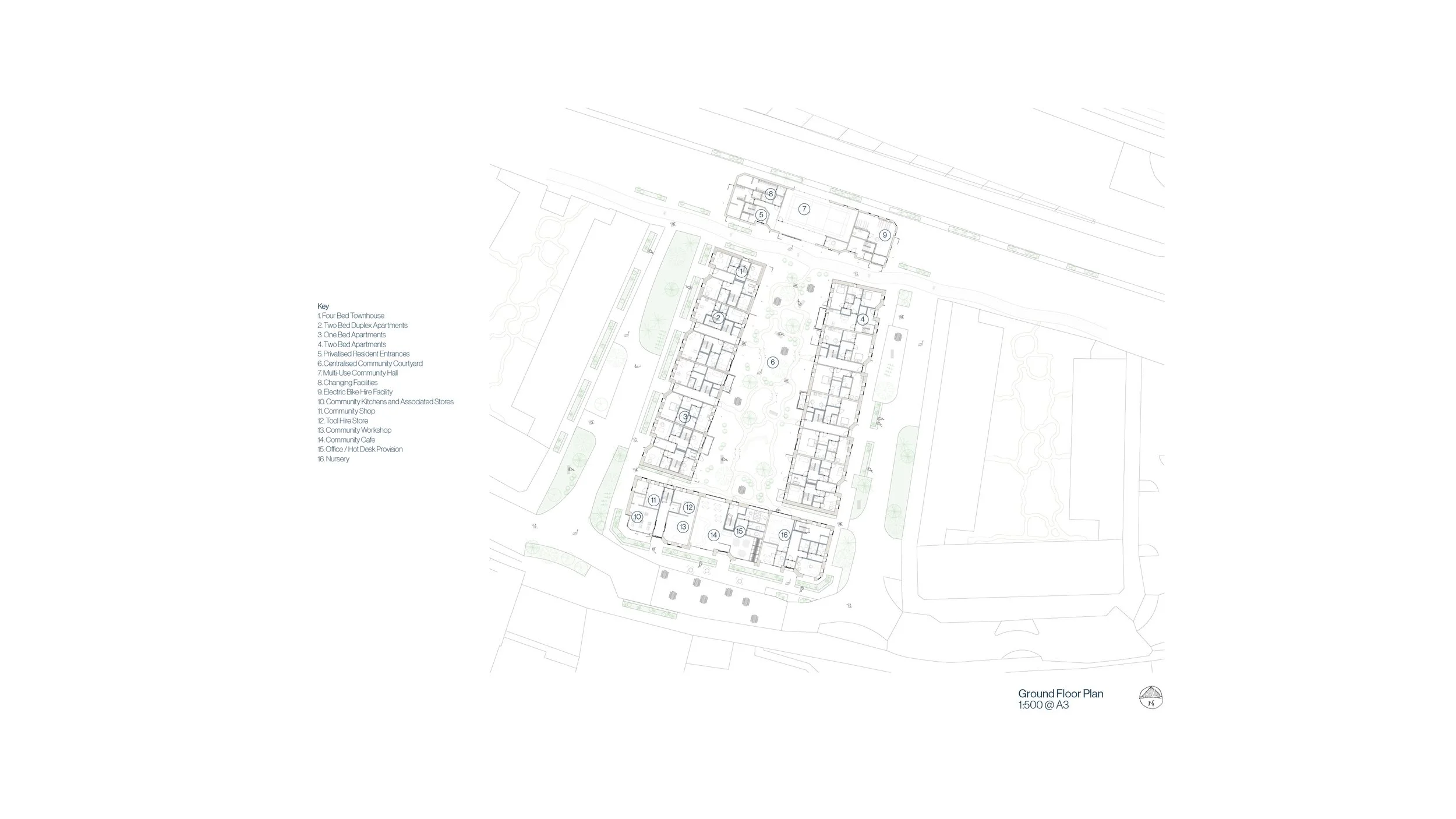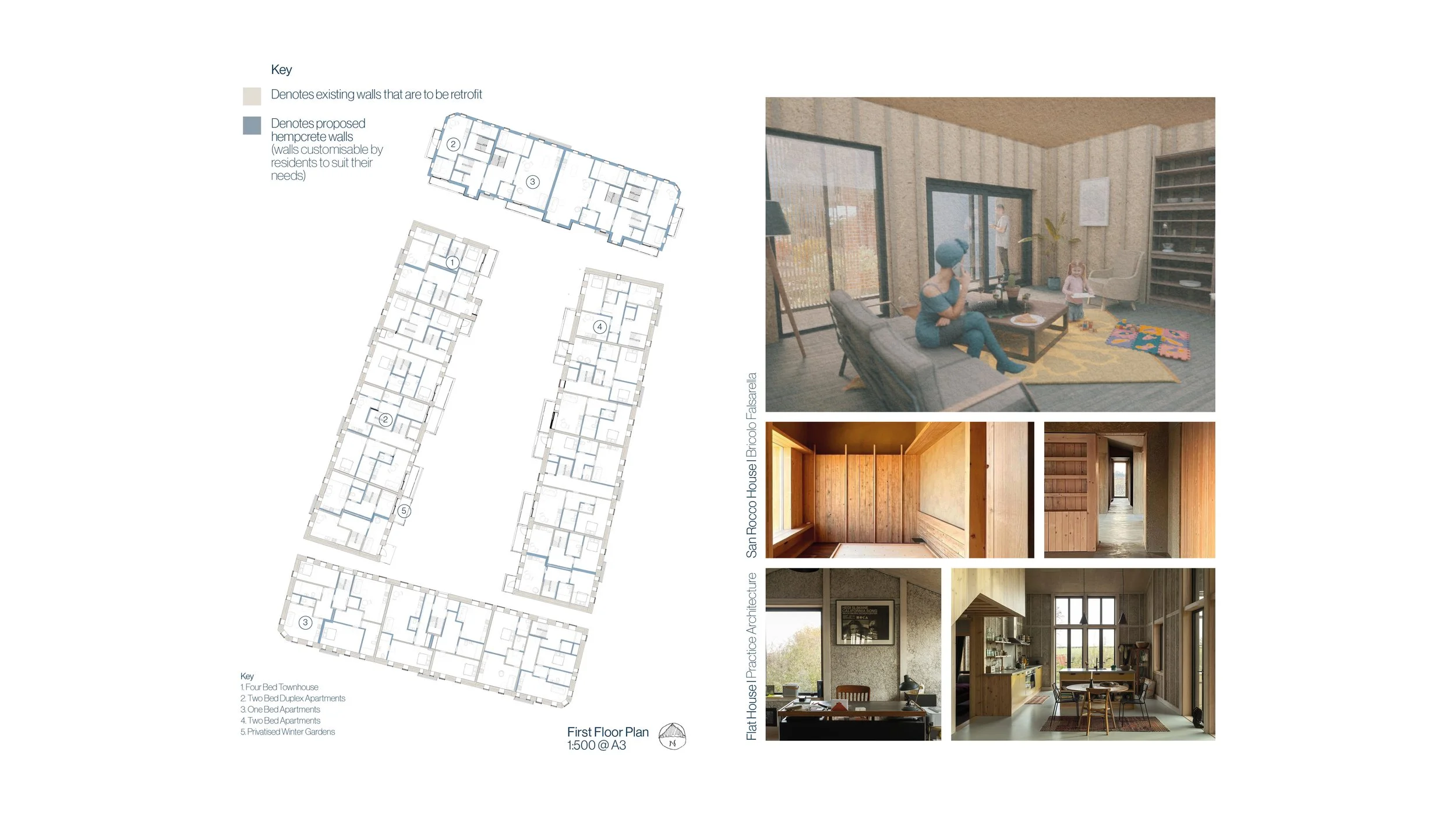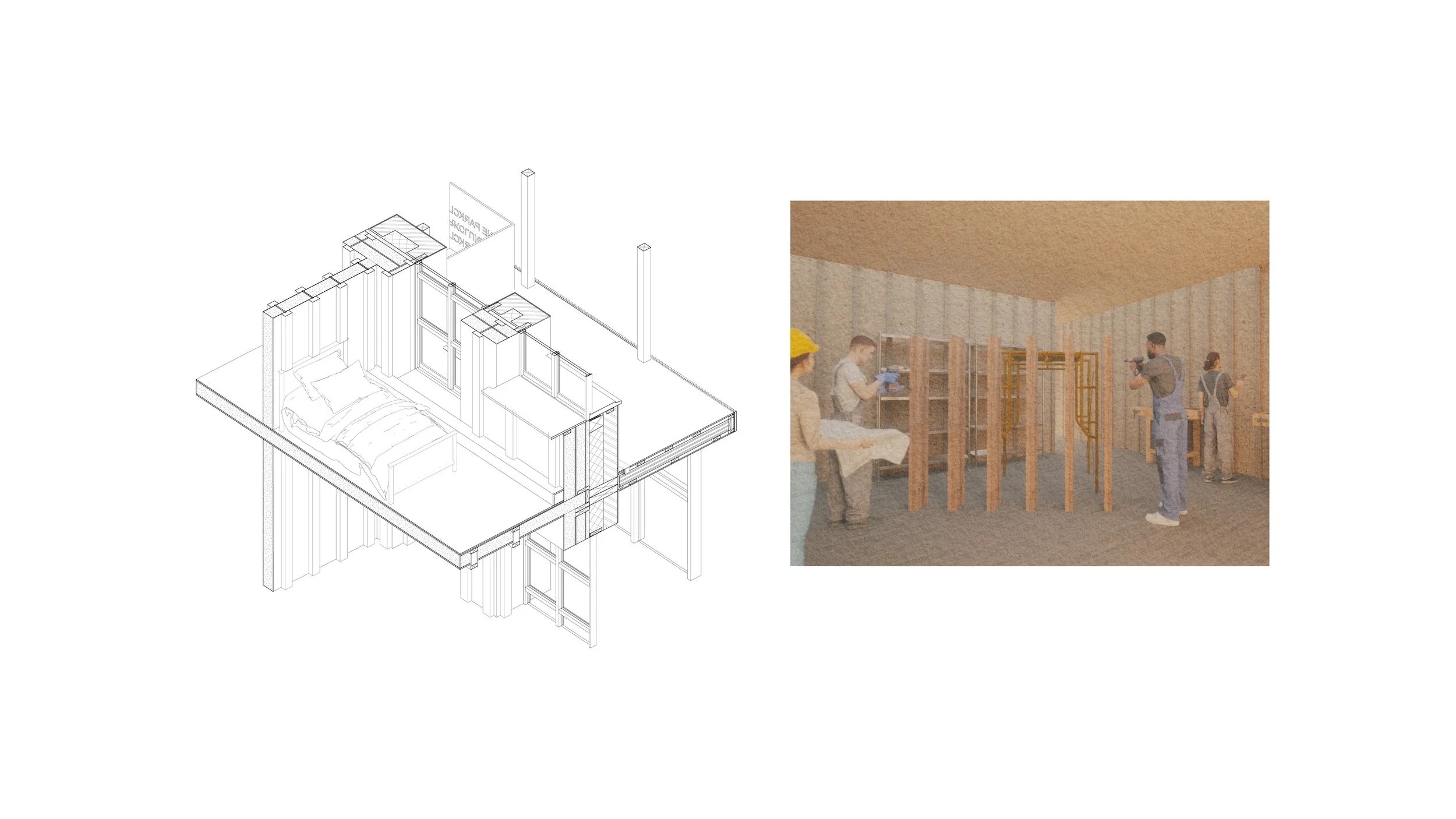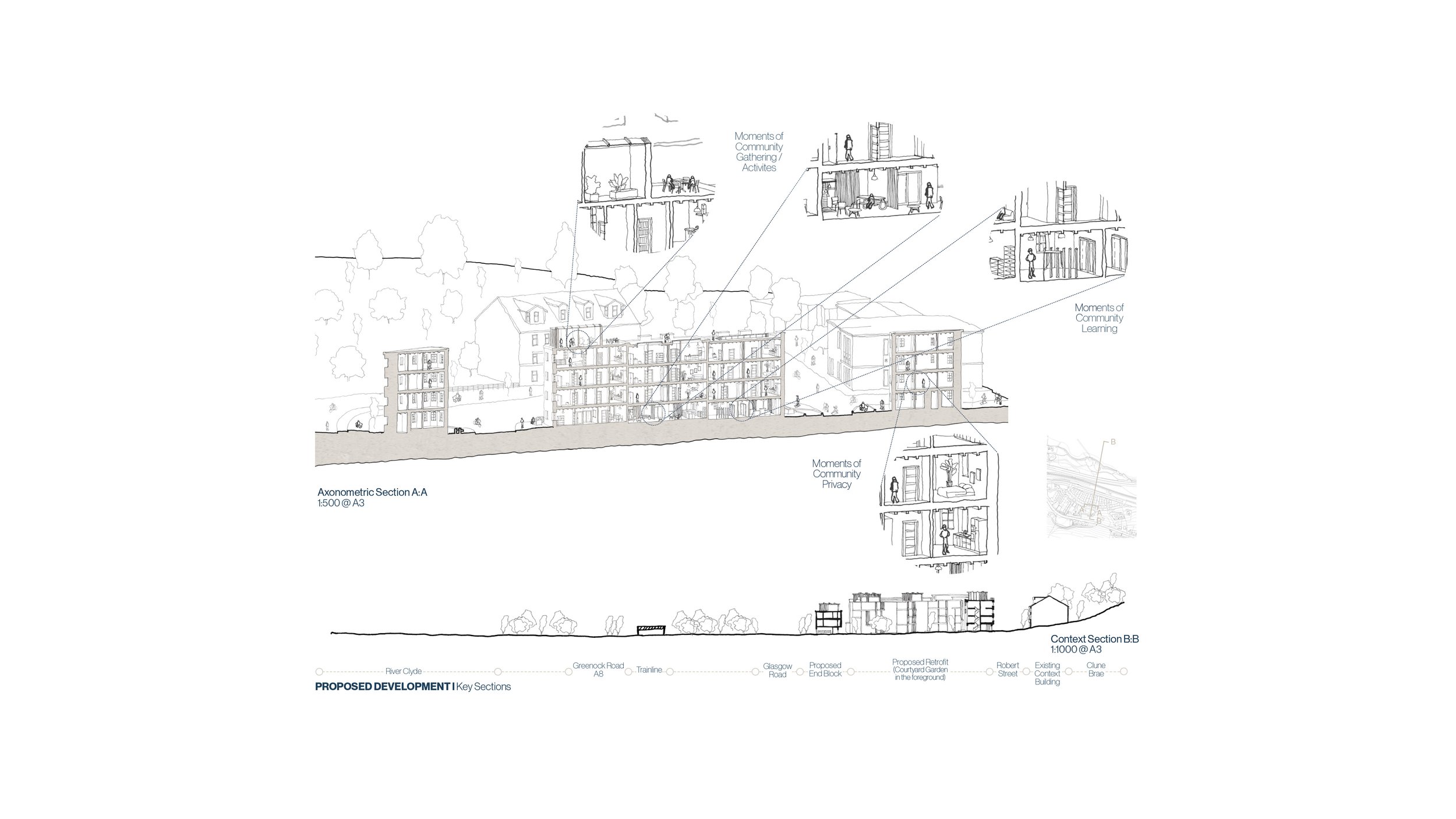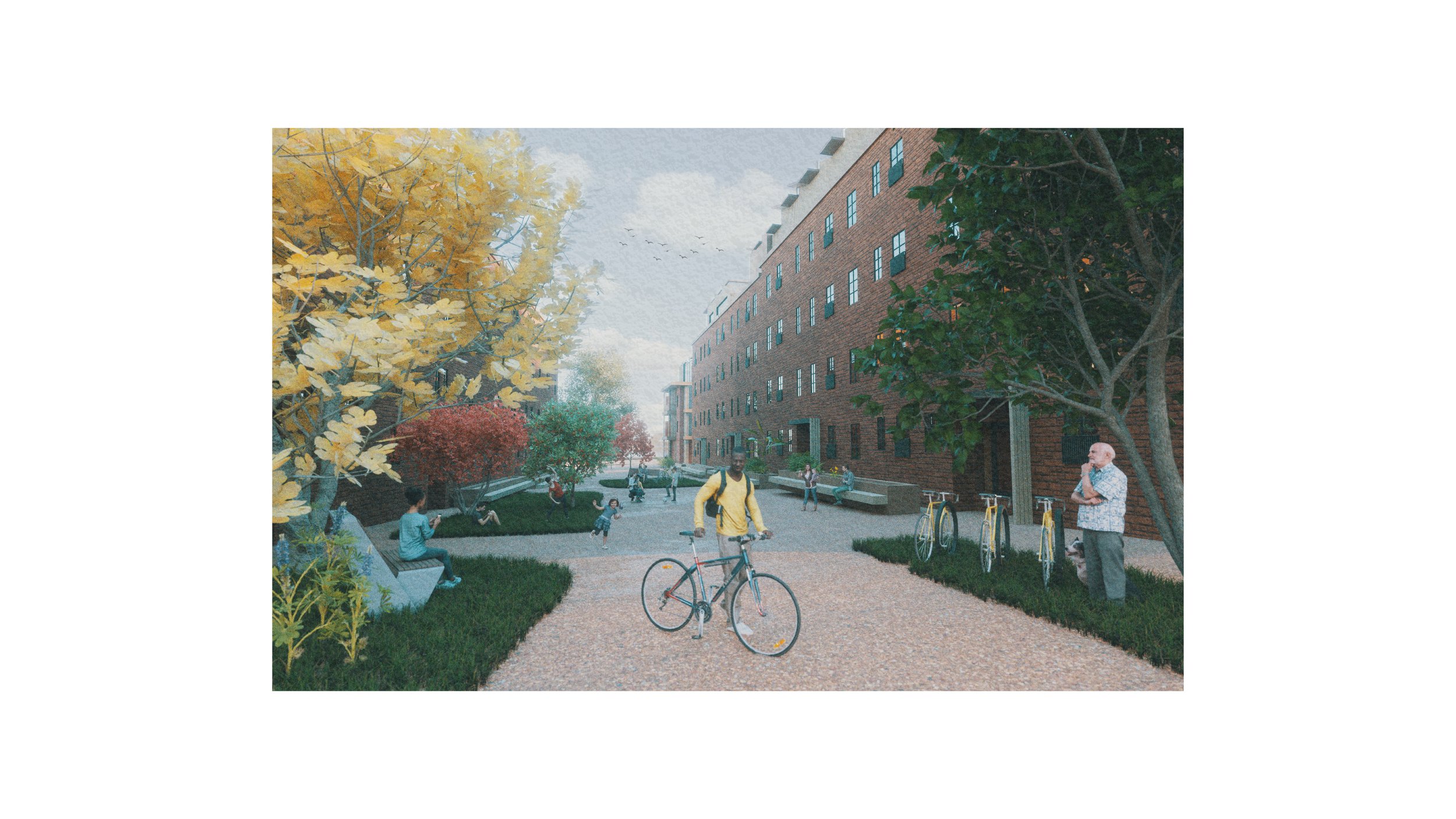JAIMIE NEAL
‘Future In Hand’ Clune Park Community Housing Retrofit // Port Glasgow
Retrofit represents a fundamental shift from established ways of realising and maintaining housing projects, it is at the end of the day, for the benefit of the people, not just the structures. In a current global context, ideals of transitions within climate change are being held back by policies and those who enforce them, culminating in unjust ways of thinking.
The project explores the [Re]Generation of these ideals through the low-impact [Re]Growth of Clune Park, an area consisting of post industrial tenement blocks located in the port town of Port Glasgow. The structures were constructed as a by-product of the shipping industry, however with the closure of the yards came the removal of the workers. The tenement blocks were left frozen in time, virtually abandoned.
The proposal begins with the creation of a community land trust, run by the residents, for the residents. The trust will provide a platform for the voices of the residents to be heard, whilst also producing a number of employment opportunities. Community centric programmes, involving the integration of a workshop for local groups, sports facilities, community gardens and kitchens and a nursery provide public spaces encouraging collaboration. Existing dwellings are [Re]Imagined as per the needs of the residents. Ultimately, knowledge gained from initial developments will be shared through the creation of a master plan vision for the area, regenerating local sites, inspiring cross generational sharing of memories, creating a friendly environment in a just manner.
Edouard Morena
“A [JUST TRANSITION] is a transition focussing on social justice in the shift towards a low - carbon future”
Port Glasgow // Context
The chosen site is located in the town of Port Glasgow, which gains its name from the heritage as the Port town for Glasgow city. Early research highlighted the connections to the ship building industry, particular focus is paid to the residual effects on the people and places following the demise of the industry.
Clune Park is a housing development created in the 1920’s to fulfil the demand for the industries. 430 flats across 45 four storey tenement blocks were created by the workers, for the workers.
Today however, occupancy rates are at an all time low of 10%.
There are strong connections into neighbouring areas such as Glasgow which can be reached in just 35 minutes by train.
What are the impacts of climate change on the population?
Retrofit represents a fundamental shift from established ways of realising and maintaining housing projects, it is for the benefit of the residents, not just the buildings.
Climate change demands a proactive response. The built environment must adapt in a transition away from processed, extractive methods of construction towards low impact material and energy sourcing which contribute to the local region in a JUST MANNER.
Retrofit with social justice at the forefront of design
The proposal will look at reintroducing housing to the area, whilst providing community facilities to learn skills, share stories and create memories.
Below is a link to hear the words of Marshall Craig, a 70 year old still residing in Clune Park. He talks at length on his opinions of the demolitions of Clune and the impacts that would have on him and his memories of living there.
Marshall’s words build the basis for the project, investigating the extent to which low carbon retrofitting, focussing on the past and future communities can help to be a catalyst for rebuilding the Port Glasgow area.
Clune Park Community Land Trust
To protect the community, the proposal will begin with the creation of a community land trust, run by the residents, for the residents.
The trust will provide a platform for the voices of the residents to be heard, whilst also producing a number of employment opportunities.
Ultimately, the knowledge gained from the initial developments will be shared through the creation of a master plan, whilst forums and workshops will allow the community to help expand the development.
Design Development
Initial iterative design processes allowed options to be explored for the integration of new elements atop the existing, with another proposing a further block to be created running along the road network to the North, reducing this disused four lane wide road down to two, giving back the network to the residents.
Here, constraints have been seen as opportunities for improvement to the area.
Community research outlined groups such as the Inverclyde shed, a community run gathering of ex industry workers and those wanting to learn new skills. The proposal will offer workshop spaces where the group can provide advice and the skills to the residents to enable them to contribute to the creation of the development.
Early CMA studies and a visit to CAT outlined the use of engineered timber I joists with a hemp infill to create a low impact and adaptable system to suit the needs of the residents.
The Clune Park Retrofit














